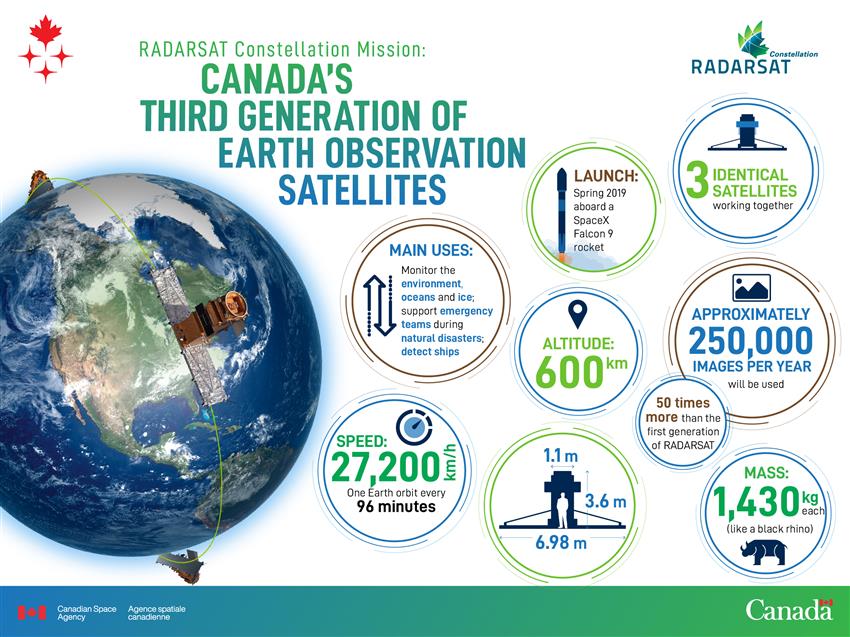RADARSAT Constellation Mission

Description
This illustration provides a visual overview of the RADARSAT Constellation Mission (RCM), Canada's new generation of Earth observation satellites. (Credit: Canadian Space Agency)
Text version
This infographic presents information about the RADARSAT Constellation Mission. It features an image of Earth with three satellites orbiting it.
Information is presented in nine bubbles:
- Three identical satellites working together
- Main uses are monitoring of the environment, oceans and ice; support to emergency teams during natural disasters; and ship detection.
- The satellites launched in spring 2019 aboard a SpaceX Falcon 9 rocket.
- Approximately 250,000 images per year will be used. That is 50 times more than the first generation of RADARSAT.
- The satellites travel at a speed of 27,200 km per hour and take about 96 minutes to circle the globe.
- The satellites travel at an altitude of 600 km.
- The satellites each have a mass of 1,430 kg (approximately the weight of a black rhino).
- Visual that shows the bus (the body) of each satellite: 3.6 m high, about the height of two average men, by 1.1 m wide. The antenna is 6.98 m wide.
File size: 2.39 MB
Image size: 2400 x 1800 pixels
Resolution: 72 dpi
Image date: November 7, 2018
Copyright / Permission to reproduce
- Date modified: